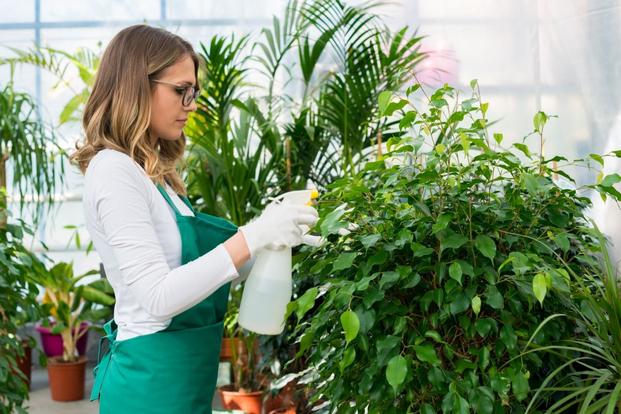 Also the calcium (Calcium) is an important plant nutrient and has a significant influence on the metabolism of plants. The lack of calcium salts leads primarily to poisoning of the roots. Lime breaks down all the acids that occur in the soil, which have an inhibiting effect on the activity of microorganisms and can also damage the plants themselves, neutralized. The small amounts of lime, which are required by the plants as nutrients, are probably also mostly available in lime-poor soils. Symptoms of deficiency are therefore rarely caused by the lack of lime as a nutrient. If there is a lack of lime, the plants are generally weakened by the unfavorable soil conditions and have little resistance to damaging influences such as drought or frost. If there is too much lime, on the other hand, the vital trace elements are fixed, and deficiencies appear, which are e.g. B. manifest as chlorosis when determining iron.
Also the calcium (Calcium) is an important plant nutrient and has a significant influence on the metabolism of plants. The lack of calcium salts leads primarily to poisoning of the roots. Lime breaks down all the acids that occur in the soil, which have an inhibiting effect on the activity of microorganisms and can also damage the plants themselves, neutralized. The small amounts of lime, which are required by the plants as nutrients, are probably also mostly available in lime-poor soils. Symptoms of deficiency are therefore rarely caused by the lack of lime as a nutrient. If there is a lack of lime, the plants are generally weakened by the unfavorable soil conditions and have little resistance to damaging influences such as drought or frost. If there is too much lime, on the other hand, the vital trace elements are fixed, and deficiencies appear, which are e.g. B. manifest as chlorosis when determining iron.
The processes and relationships in the mode of action of the nutrients in the metabolism of the plants are much more complicated, than they could be shown here. It must be reserved for special textbooks on plant nutrition, to inform the interested party in detail about the different plant nutrients.
leaf- and flowering plants, which we take care of as room decorations, will only get by with the nutrients offered to them in the potting soil for a limited time. An enrichment of the soil with nutrients as "storage fertilization" can only take place to a certain extent. While plants with a slow development process and correspondingly low nutrient requirements "feed" on this supply for a longer period of time, he will at rapidly growing, short-lived species may be exhausted after just one growing season. We then have to ensure a sufficient supply of nutrients for their further development, either through post-fertilization – mostly in liquid form – or provide by transplanting*. Because of the importance of these measures, fertilizing and repotting will be discussed separately in the following sections. The need for certain nutrients varies during the different stages of development. So e.g. B. mainly nitrogen is needed for shoot growth, which is to be supplied continuously to the leafy plants. Flowering plants have an increased need for phosphorus and potash in the budding and fruiting stage. Naturally, all plants do not require any additional supply of nutrients when they are dormant. On the contrary, if the water supply is restricted or stopped during the dormant period, it can lead to damage from root burns and the loss of plants. As we saw, we achieve the goal of our care – healthy plants, which bring their species-specific characteristics to the highest development – only by action, which enable a harmonious interaction of all growth factors.